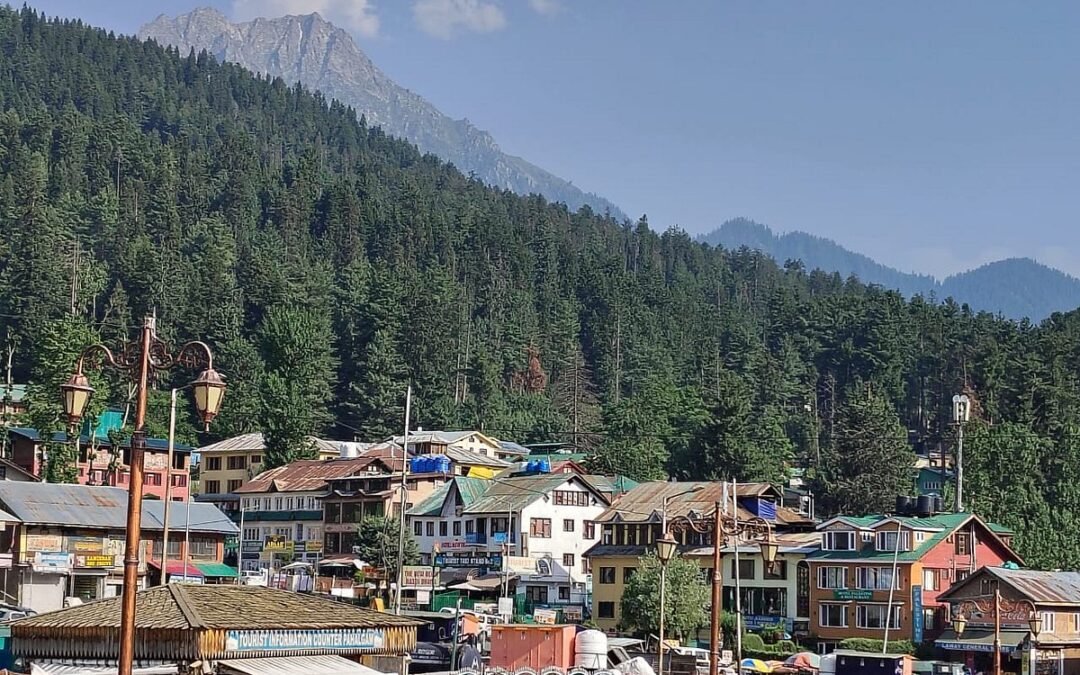“Aaj yeh Kashmir hain majboor-o-faqeer, kal jise kehte the Iran-e-Sagheer (Today, this Kashmir is helpless and poor, which till yesterday was known as ‘little Iran’),” lamented 60-year-old shawl seller Aziz Tak, as he slightly tweaked a couplet of Allama Iqbal to point towards the state of despair in Pahalgam.
Tak, whose earnings have almost turned nil since the April 22 terror attack, is among the scores of locals who see no hope for recovery in the near future.
“I just sit idle on all days,” said Rahat Mir, who owns a carpet shop in the Main Market, which lies along the KP Road that connects Pahalgam with Chandanwari. Mir used to earn about Rs 10,000 a day during peak summer.
Several eateries, which primarily catered to tourists, have downed their shutters. This includes the Pahalgam branch of Nathu’s, a prominent vegetarian chain operating in the Kashmir Valley since 1936.
Among the worst-impacted are Pahalgam’s hoteliers, who infused capital into their businesses while gearing up for the 2025 tourist season. They were hoping that it would be similar to the previous year when the footfall of visitors in Jammu & Kashmir was at an all-time high of 35 lakh.
An owner of a resort close to Lidder river said he had taken a loan of Rs 1 crore for infrastructural upgrade ahead of this year’s summer tourist season. “I’m struggling to pay the EMIs,” he said, without disclosing his identity.

Hotels in Pahalgam have recorded several days of nil occupancy since the terror attack in Baisaran on April 22. (Photographer: Mohammed Uzair Shaikh/NDTV Profit)
Hoteliers Rue Zero Occupancy
While its difficult to exactly quantify the brunt bore by the local economy following the Pahalgam attack, the loss for hoteliers is easily in excess of Rs 200 crore, said Javeed Bashir Burza, the president of Pahalgam Hotel and Restaurant Owners Association.
The average revenue per available room has slipped by 60% in top-tier hotels, and even more sharply in lower grade hotels, he said.
“We have 5,000-6,000 beds in Pahalgam hotels. Even by a conservative estimate, the average daily revenue per available bed is at least Rs 2,000,” he explained. This takes the per day loss to around Rs 1 crore. Since this year’s peak season of May-July is almost wiped out, the loss is over Rs 200 crore, Burza said.
The occupancy rate in hotels is negligible, even 50 days after the terrorist attack, said Burza, who is also the owner of Hotel Mount View, one of the oldest hotels of Pahalgam. The occupancy is sometimes 10%, at most 20%, but on several days it is 0%.
The margins will not be sustainable either, he said.
The ”impact is much more adverse” if we take into account the brunt which local businesses and taxi operators face, he added.
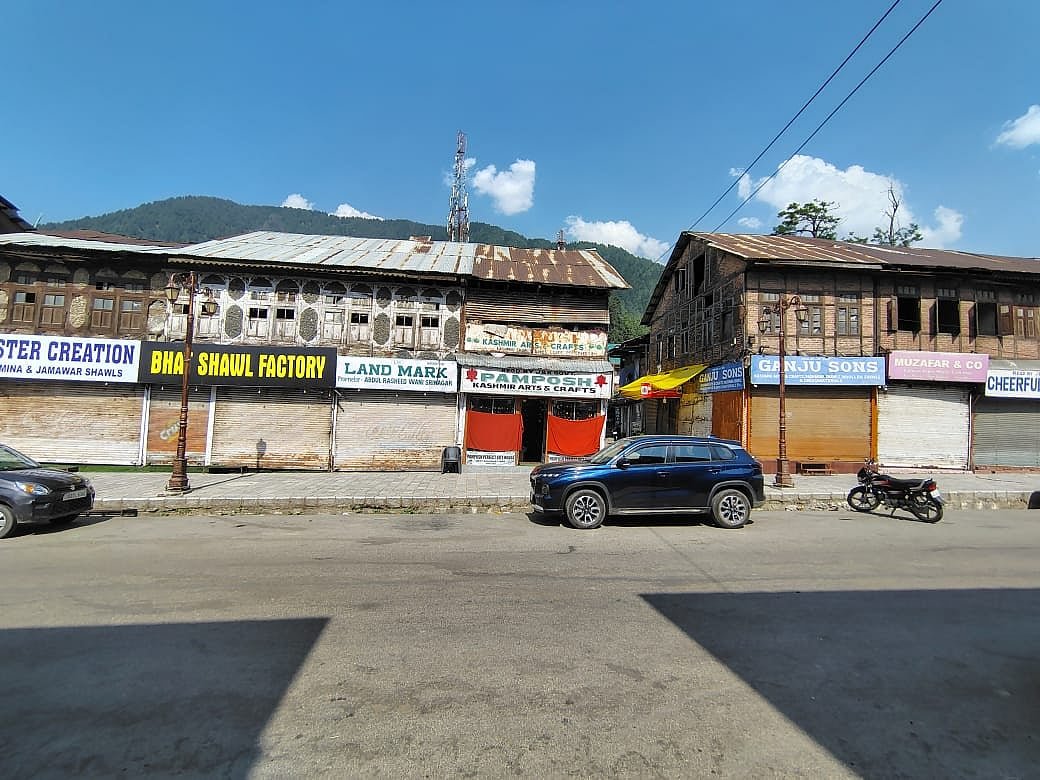
The once-bustling Main Market of Pahalgam now remains empty, with several shops closing down temporarily. (Photographer: Mohammed Uzair Shaikh/NDTV Profit)
Markets Lack Their Sheen
The tourist-heavy markets of Pahalgam wore a deserted look. Since it is difficult to even recover the operational costs, it feels logical to keep the shutters down for the time being, said Irfan Bhat, a resident of nearby village who runs a clothing shop.
Not only in Pahalgam, but the local markets of nearby villages and towns have also been affected.
“The locals barely consumed much during this year’s Eid-al-Adha,” said Asif, who owns a departmental store in Seer Hamdan, located 25 km away from Pahalgam.
The story was similar for markets of Anantnag, the biggest town of South Kashmir, located 45 km from Pahalgam. “This was one of the saddest Eids,” said Aarif Dar, who owns an apparel shop in Hussainabad, located close to the Anantnag Bus Depot.
Due to security concerns, several prominent tourist attractions have been closed not only in Pahalgam, but also in adjoining parts. In Anantnag, tourist favourites like Kokernag and Verinag have been shut down. This has adversely impacted the earnings, and hurt consumption, a Srinagar-based economist said, on the condition of anonymity.

The livelihoods of horsemen have also been nearly crushed due to the absence of tourists. (Photographer: Mohammed Uzair Shaikh/NDTV Profit)
Empty Cabs Lining The Streets
There were 500-1,000 cabs operating to and from Pahalgam daily before the terror attack, according to Ejaz Bhat, who is associated with the Pahalgam Taxi Union for 25 years. A bulk of them are now lying vacant, with EMIs piling up, he said.
Those who own vehicles that can accommodate around eight passengers are using them for local commutation, Bhat explained. “Earlier, we used to earn around Rs 2,500 a day making two trips from Pahalgam to Srinagar and vice-versa. But now, we use it for local rides and barely earn Rs 700-800.”
Those with smaller cars don’t have that option. Their cars are useless at this moment, he added.
Pahalgam’s iconic ponnywallahs are suffering too. They used to earn around Rs 3,000 a day during the peak summer season, while spending Rs 300 a day on horse’s food. However, the earning is almost negligible over the past 50 days and their savings are being used to maintain the horses, one of them said on the condition of anonymity.
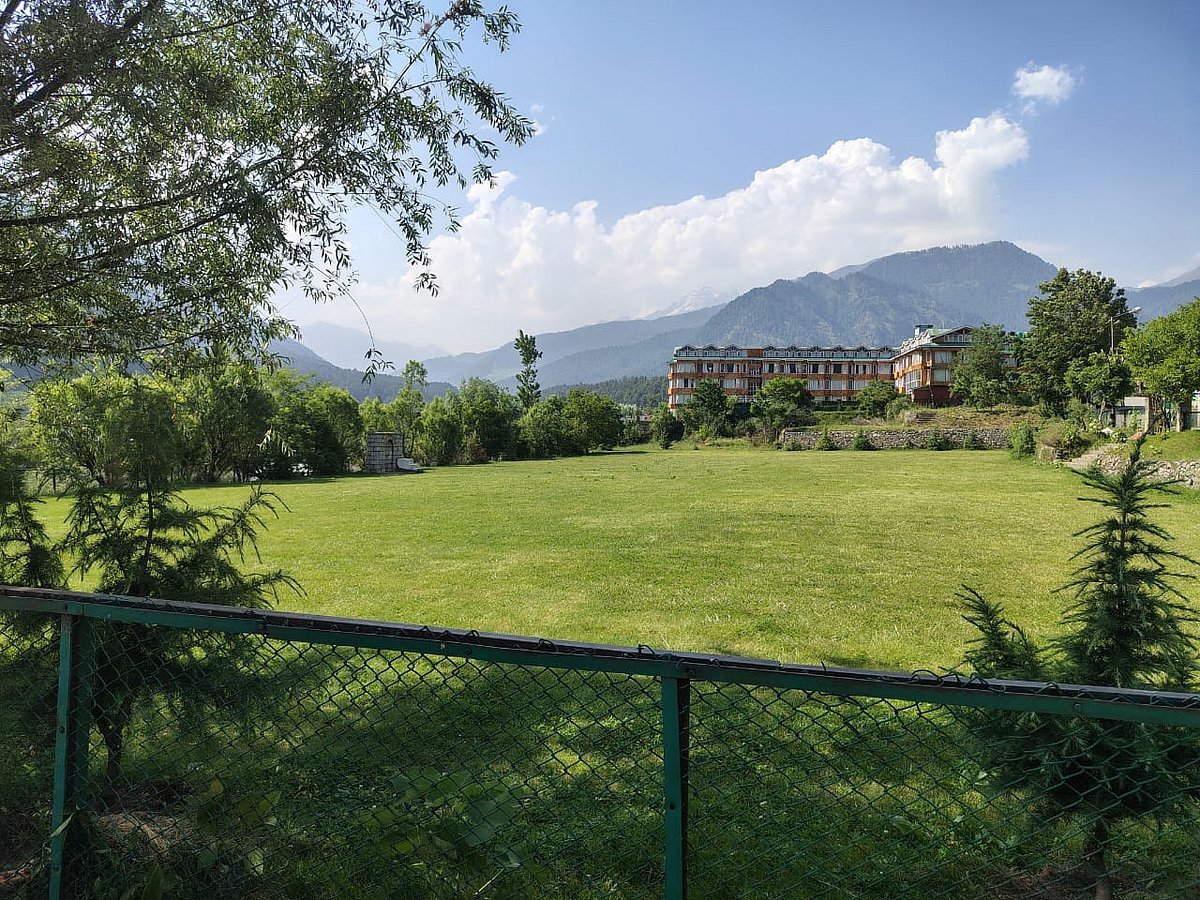
An empty garden, with Hotel Mount View – one of Pahalgam’s oldest hotels – in the background. The per day room rate at the hotel has slipped from Rs 13,000-14,000 to Rs 5,000-6,000. (Photographer: Mohammed Uzair Shaikh/NDTV Profit)
Way Forward
Kashmir’s tourism offers “three lakh direct and 30 lakh indirect employment”, which makes it imperative to support this sector at such a critical stage, said Burza.
As per official figures, tourism sector accounts for 7-8% of J&K’s gross state domestic product. With the total real GSDP at Rs 1.45 lakh crore, the estimated size of tourism sector stands at over Rs 10,000 crore.
As the PHROA chief, Burza claims to have held multiple meetings with Jammu & Kashmir Chief Minister Omar Abdullah and Lieutenant Governor Manoj Sinha. He appealed to both the leaders to seek the reopening of several tourist attractions in Pahalgam and adjoining regions that are currently closed.
“It’s over 50 days now (since the attack)…Maybe Aru Valley and Betaab Valley (both in Pahalgam) could be reopened. Closing 48 destinations may send a wrong signal,” Burza said.
Hoteliers in Pahalgam also pin hope on the Amarnath Yatra, as it could restore some confidence among visitors.
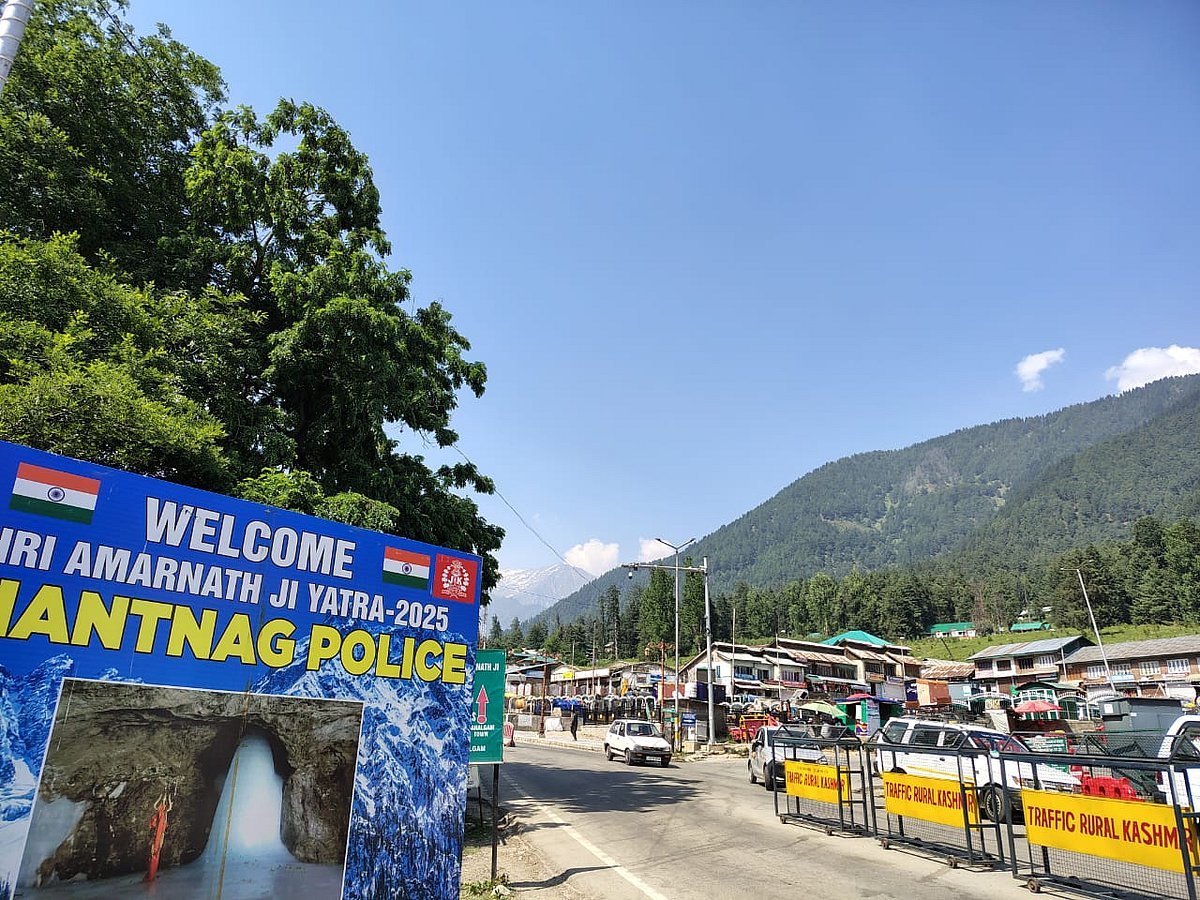
Pahalgam serves as one of the two routes for embarking on the Amarnath Yatra, scheduled from July 3 to August 9 this year. (Photographer: Mohammed Uzair Shaikh/NDTV Profit)
Appeal To PM Modi
Burza, on behalf of the hoteliers in Pahalgam, said he wants to appeal to Prime Minister Narendra Modi to help in rebuilding the confidence among tourists. The momentum created over the past three years should not be totally lost, he said.
A major credit for the bumper tourism over the last three years goes to the central government, he added, noting that the footfall seen in 2022, 2023 and 2024 was unparalleled.
“We appeal Modi ji to tell the people of India that Kashmir is our part, and Kashmiris are our people. We have to support them, and uplift them.”
As the tensions ease and borders turn calm again, Kashmiris hope that tourists would eventually start returning. A full recovery, however, would still need at least two more years, Burza stressed.
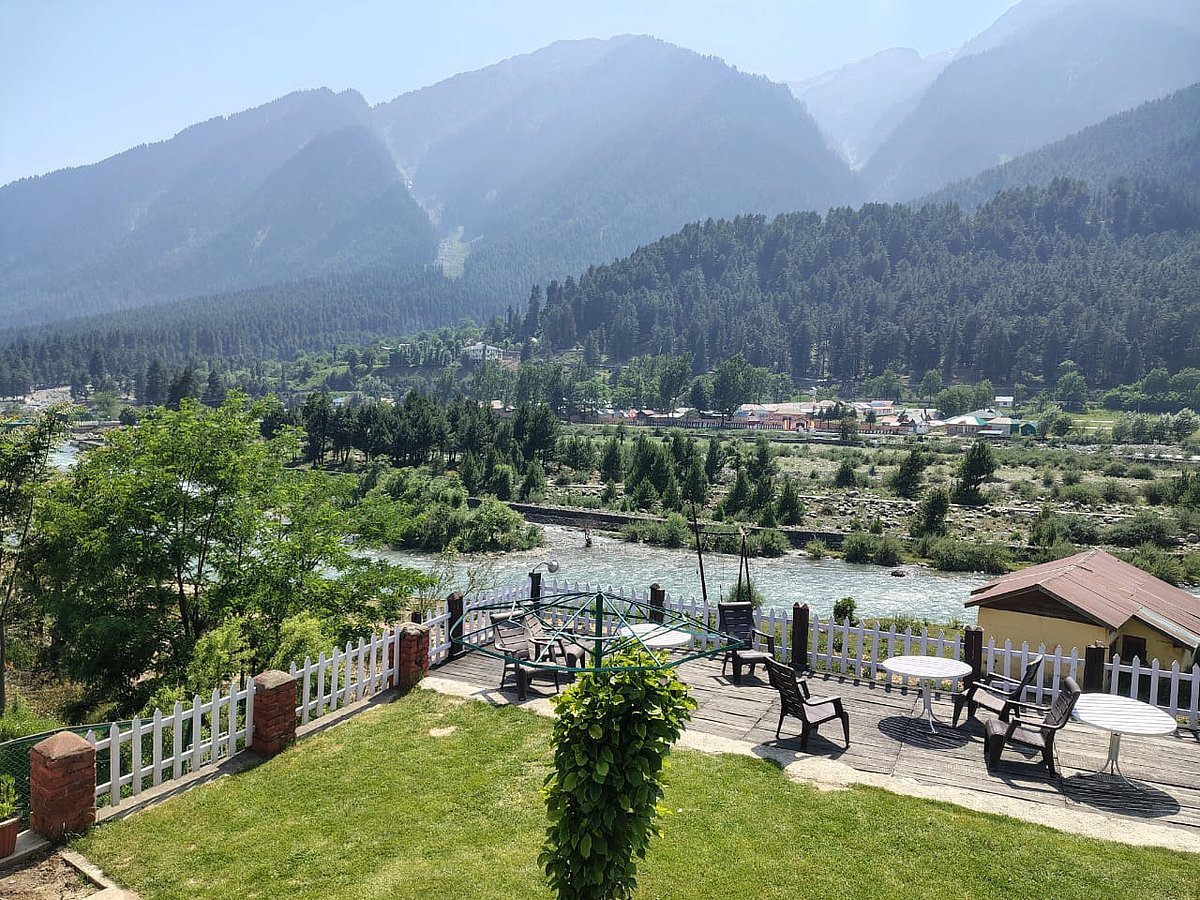
Literally meaning the ‘valley of shepherds’, Pahalgam is a hill station nestled in the Himalayan ranges of South Kashmir, along the banks of Lidder river. (Photographer: Mohammed Uzair Shaikh/NDTV Profit)
. Read more on Business by NDTV Profit.

